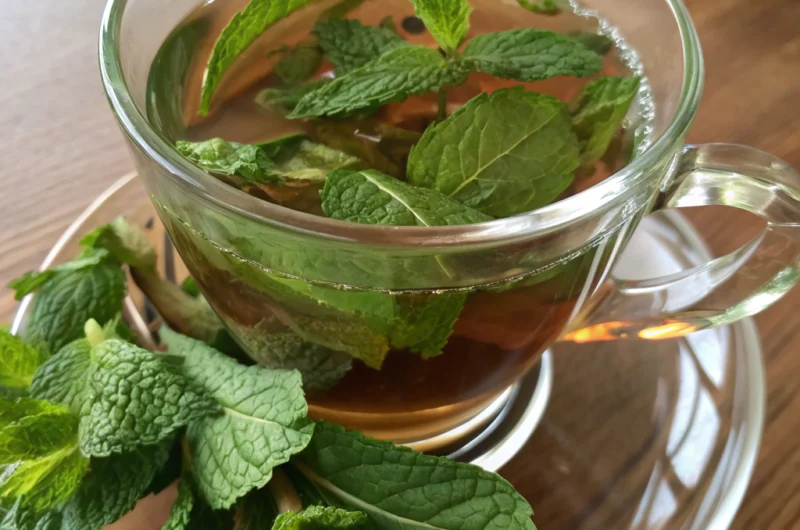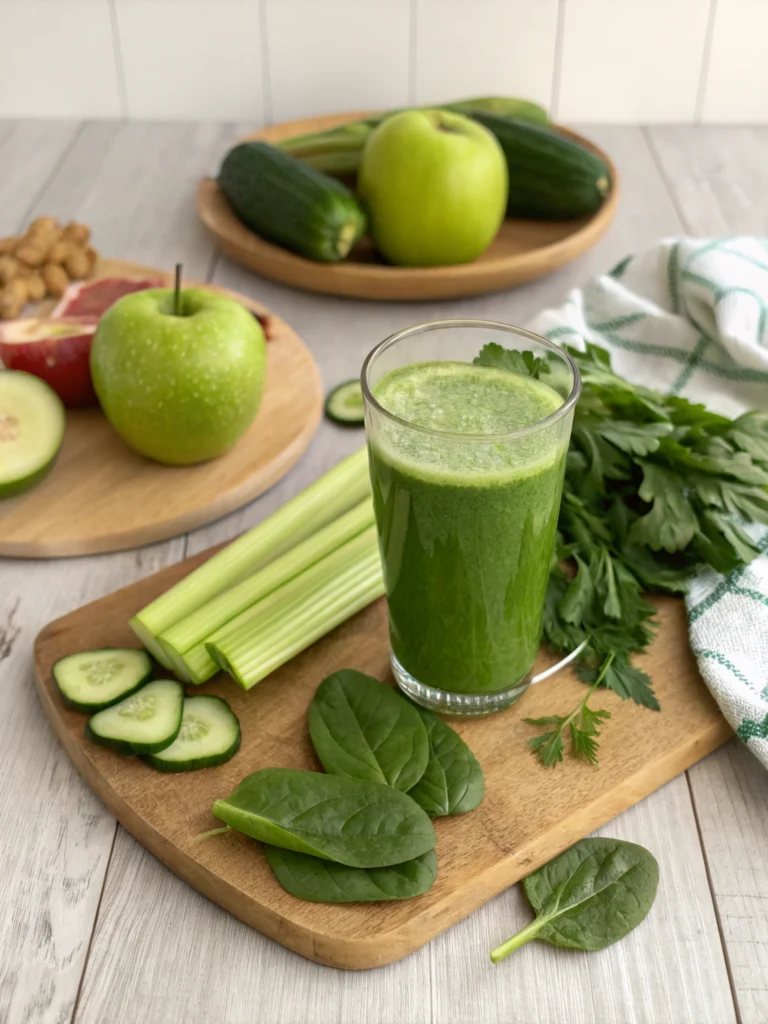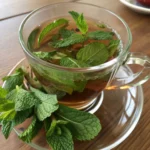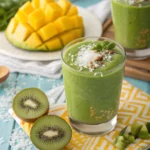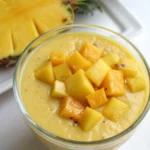Have you ever wondered why a simple cup of mint tea can instantly soothe your stomach after a heavy meal? Or why the aroma alone seems to melt away stress within moments? The secret lies not just in mint’s pleasing flavor, but in its powerful therapeutic properties that have been treasured for centuries.
Making the perfect cup of Mint Tea is both an art and a science. When prepared correctly, this refreshing herbal tea can transform your digestive health and provide a calming ritual that fits seamlessly into any daily routine. Let’s explore how to create this simple yet powerful beverage that has stood the test of time.
Ingredients List
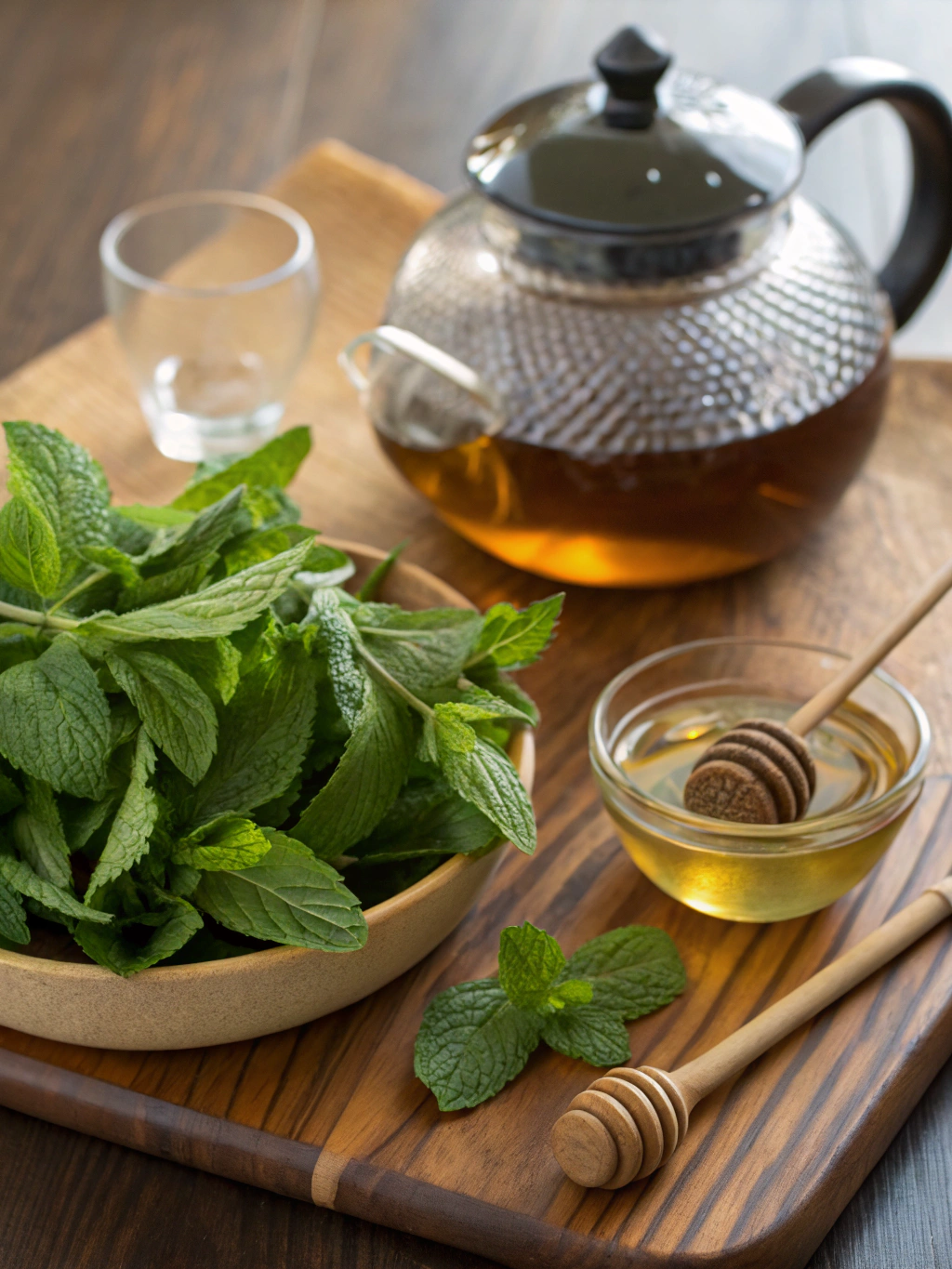
The beauty of mint tea lies in its simplicity, though there are several ways to enhance its flavor and therapeutic benefits. Here’s what you’ll need for a perfect cup:
- Fresh mint leaves – 8-10 large leaves (approximately 1/4 cup when loosely packed). Peppermint offers stronger digestive benefits, while spearmint provides a sweeter, gentler flavor.
- Filtered water – 8 ounces (1 cup), preferably spring or filtered
- Honey or sweetener – 1 teaspoon (optional) – raw honey works best for additional digestive benefits
- Lemon slice – Fresh, organic (optional) to brighten the flavor and add vitamin C
- Additional herbs – (optional) small pinch of dried chamomile, fennel seeds, or ginger for enhanced digestive properties
Substitution options: If fresh mint isn’t available, 1-2 teaspoons of dried mint leaves work well. For sweeteners, try maple syrup, stevia, or agave nectar instead of honey.
Timing
- Preparation time: 2-3 minutes to gather ingredients and wash mint leaves
- Steeping time: 5-7 minutes (compared to black tea’s typical 3-5 minutes, allowing more time for mint’s beneficial oils to infuse)
- Total time: Under 10 minutes – making mint tea 40% faster to prepare than most other therapeutic beverages, perfect for quick relief when needed
Step-by-Step Instructions
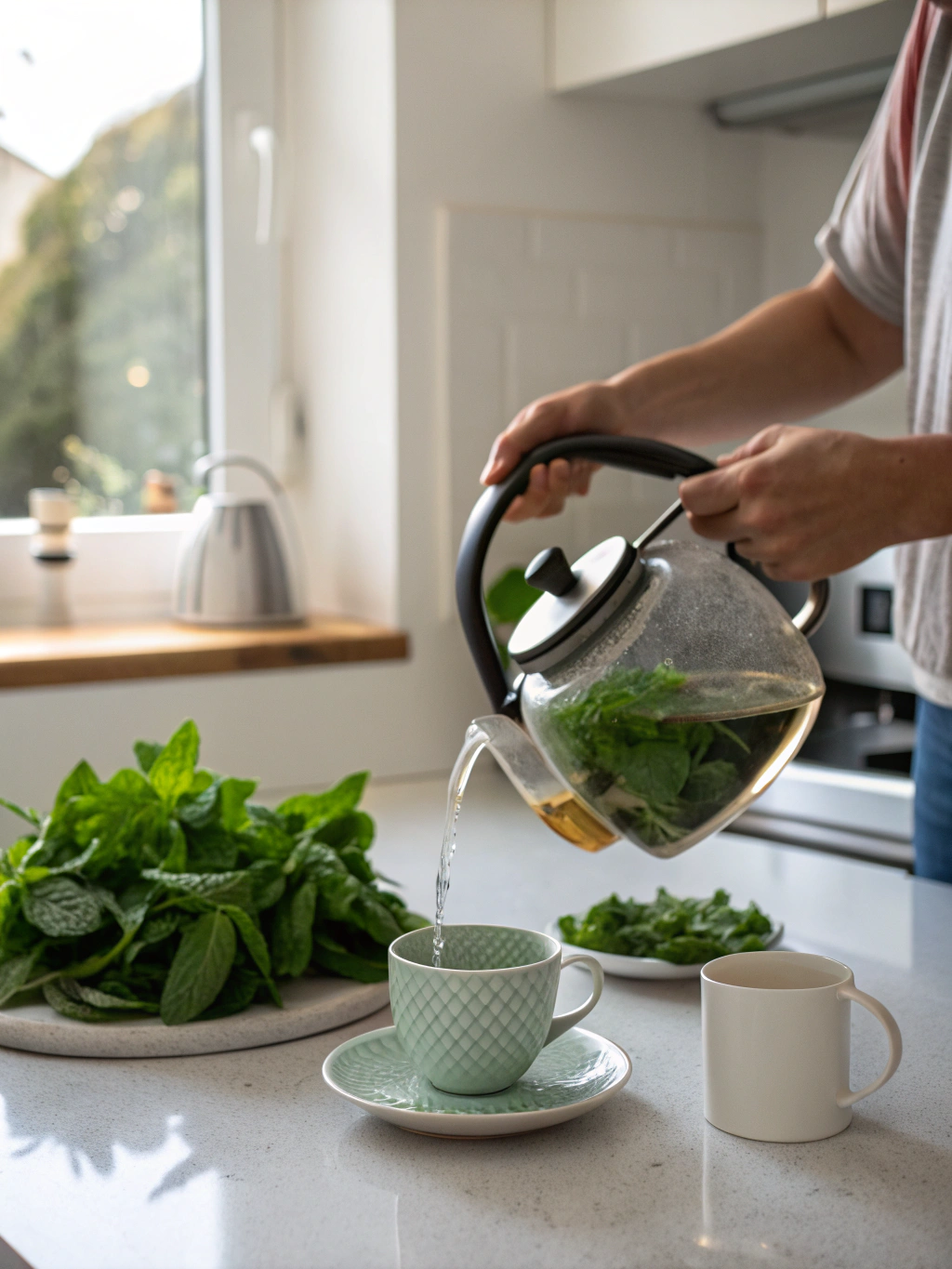
Step 1: Harvest and Prepare the Mint
Select fresh, vibrant mint leaves from the middle of the plant, as these contain the highest concentration of essential oils. Gently rinse under cool water to remove any dust or residue. Pat dry with a clean kitchen towel or paper towel. For maximum flavor release, lightly crush or bruise the leaves between your fingers – this helps release the aromatic oils that give mint its therapeutic properties.
Step 2: Heat the Water Properly
Heat fresh, filtered water to approximately 190-200°F (88-93°C) – just below boiling. Unlike black or green teas that can become bitter when brewed too hot, mint tea benefits from water that’s very hot but not actively boiling. This temperature range optimally extracts mint’s beneficial compounds without destroying its delicate aromatic oils.
Step 3: Steep to Perfection
Place the mint leaves in a teapot or directly in your cup. Pour the hot water over the leaves and cover immediately to trap the essential oils. Allow to steep for 5-7 minutes. The longer steeping time (compared to traditional teas) allows for maximum extraction of menthol and other beneficial compounds that aid digestion and relaxation.
Step 4: Strain and Sweeten
If using a teapot, strain the tea into your cup. For a single cup preparation, you can simply remove the mint leaves or leave them for continued infusion. If desired, add sweetener while the tea is still hot, stirring gently until dissolved. For digestive benefits, raw honey is particularly effective as it contains enzymes that complement mint’s soothing properties.
For a soothing twist, try pairing this refreshing mint tea with other homemade warm drinks like our Homemade Lemon Ginger Tea — perfect for cold days or digestive comfort.
Step 5: Enhance and Serve
Add a fresh slice of lemon if desired, which not only brightens the flavor but also helps your body absorb more of mint’s beneficial compounds. For additional digestive support, consider adding a small pinch of ginger or fennel. Serve immediately while still hot for maximum aromatic benefit and digestive relief.
Nutritional Information
Plain mint tea is virtually calorie-free (less than 2 calories per cup) and contains no fat, making it an excellent choice for those monitoring their caloric intake. When consumed without sweeteners, it’s also carbohydrate-free and suitable for most dietary plans including keto, paleo, and vegan diets.
Mint contains significant amounts of antioxidants – studies show it has a higher antioxidant capacity than many other herbal infusions, with approximately 7.6 mmol of antioxidants per 100g of fresh leaves. It’s also a good source of vitamin A, providing about 4% of your daily value per cup.
The active compounds in mint, particularly menthol and rosmarinic acid, have been clinically shown to relax digestive tract muscles and reduce inflammation, explaining its effectiveness for digestive discomfort. Research indicates that peppermint oil, concentrated in the tea, may reduce abdominal pain by up to 40% in individuals with IBS.
Healthier Alternatives for the Recipe
For enhanced digestive benefits, try a “triple mint” variation by combining peppermint, spearmint, and apple mint leaves, which provides a broader spectrum of beneficial compounds. Research suggests this combination may offer more comprehensive digestive support than single-variety mint tea.
If seeking caffeine-free alternatives to coffee, create an energizing mint blend by adding a small piece of fresh ginger and a pinch of turmeric. This combination provides natural energy without caffeine’s potential side effects while adding anti-inflammatory benefits.
For those watching sugar intake, try brewing mint tea with a cinnamon stick, which naturally enhances sweetness perception without adding calories. Studies show cinnamon may help regulate blood sugar, making this an excellent option for those with diabetes or insulin sensitivity.
Serving Suggestions
For a refreshing summer beverage, allow your mint tea to cool completely, then pour over ice with fresh cucumber slices and a sprig of mint. This creates a spa-like hydrating drink that aids digestion while cooling the body.
Create a soothing evening ritual by serving mint tea in a warmed mug with a small drizzle of honey and a drop of vanilla extract. This combination promotes relaxation and can help prepare your body for restful sleep without the sedative effects of medication.
If you love cozy, aromatic beverages, you might also enjoy our Homemade Hot Apple Cider — a comforting drink packed with cinnamon, cloves, and apple goodness that perfectly complements mint tea during winter evenings.
For entertaining guests, serve mint tea in clear glass cups with floating mint leaves and edible flowers like lavender or chamomile. The visual presentation enhances the sensory experience while providing a sophisticated non-alcoholic option for social gatherings.
Common Mistakes to Avoid
- Using boiling water – Water that’s too hot (above 205°F/96°C) can destroy mint’s delicate aromatic compounds and release bitter flavors. Allow water to rest 30-60 seconds after boiling before pouring.
- Under-steeping the tea – Unlike green tea which becomes bitter when over-steeped, mint benefits from longer steeping times. Data shows optimal menthol extraction occurs between 5-7 minutes.
- Using old or improperly stored mint – Mint leaves lose up to 60% of their essential oils within 24 hours of harvesting if not properly stored. Use fresh leaves or store them wrapped in damp paper towels in the refrigerator.
- Covering the cup during steeping – Leaving your tea uncovered allows essential oils to evaporate. Always cover during steeping to trap the therapeutic compounds that make mint tea effective for digestion.
Storing Tips for the Recipe
Fresh mint leaves can be stored in the refrigerator for up to one week when wrapped loosely in slightly damp paper towels and placed in a perforated plastic bag. This method preserves up to 80% of the essential oils compared to unwrapped storage.
For convenience, prepare mint tea concentrate by steeping triple the amount of mint leaves for 10 minutes, then refrigerating the strained liquid in an airtight container for up to 3 days. Simply dilute with hot water when needed for instant relief.
Freeze fresh mint tea in ice cube trays with a small mint leaf in each compartment. These cubes can be added to hot water for a quick cup or used in smoothies and summer beverages for a refreshing mint flavor with digestive benefits.
Conclusion
Crafting the perfect cup of mint tea is a simple yet rewarding process that delivers powerful benefits for both body and mind. By following these steps and incorporating the suggested tips, you’ll create a therapeutic beverage that not only soothes digestive discomfort but also provides a moment of calm in your busy day.
Have you tried making mint tea using these methods? We’d love to hear about your experience and any personal variations you’ve discovered. Share your mint tea moments in the comments below, or tag us in your tea-time photos on social media. For more healing beverage recipes, be sure to explore our herbal remedy collection!
Homemade Mint Tea for Digestion & Relaxation
Course: DrinksCuisine: HerbalDifficulty: Easy1
servings3
minutes7
minutes2
kcal10
minutesA soothing homemade mint tea made with fresh mint leaves, honey, and lemon. This calming herbal drink aids digestion, eases bloating, and promotes relaxation naturally.
Ingredients
8-10 fresh mint leaves (about 1/4 cup loosely packed)
1 cup filtered water
1 teaspoon honey or natural sweetener (optional)
1 lemon slice (optional)
Small pinch of chamomile, fennel seeds, or ginger (optional)
Directions
- Rinse fresh mint leaves under cool water and lightly crush them between your fingers to release their natural oils.
- Heat filtered water to about 190–200°F (88–93°C), just below boiling point, to preserve mint’s delicate aroma.
- Place the mint leaves in a teapot or cup, pour hot water over them, and cover. Let steep for 5–7 minutes to extract full flavor and benefits.
- Add a lemon slice or extra herbs like ginger or fennel for enhanced flavor. Serve warm and enjoy its calming aroma.
Notes
- Use water below boiling temperature to avoid bitterness and preserve mint’s essential oils. For a refreshing twist, cool and serve over ice with cucumber slices.

